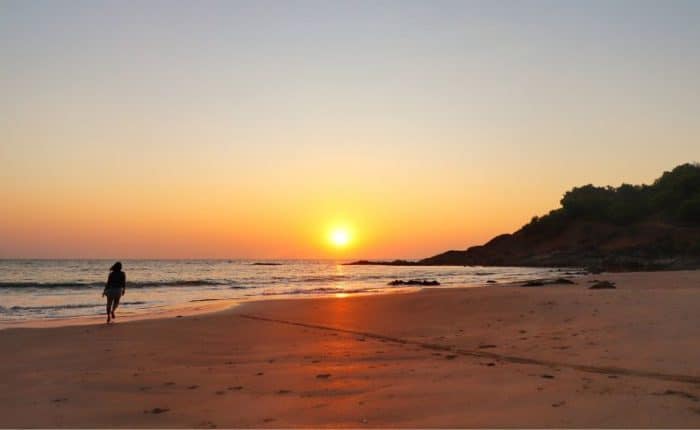Table of Contents
Acclimatization 101
Well, I see you’ve finally decided to take a break from the hustle and head straight to the Himalayas for a high altitude trek. That’s commendable, but it is also important to pay attention to the challenges this step will throw at you. Read below to know all about Acclimatization in the Himalayas.
One of which and perhaps the most important challenge is to acclimatize oneself while in the Himalayas.
If this a never-heard-before term for you, then don’t worry. Over the next few minutes, I will introduce the phenomenon and why it is your best friend in the high altitudes and how to actually use it to your benefit.
The dictionary definition of Acclimatize is to become accustomed to a new climate or new conditions. In other words, ADJUST. That’s all there is about it, Acclimatization process helps your body to adjust and allows the body to function normally in the myriad of difficult climatic conditions that the Himalayas throw at you.
While there are other means to acclimatize oneself, I would highly recommend the natural way. Our bodies are a miracle in a way that they can acclimatize naturally.
How do our bodies Acclimatize naturally to High Altitude
It is a well-known fact (If it isn’t, it will be after you read this) that as the altitude decreases, atmospheric pressure decreases. What a decrease in atmospheric pressure results in having more space for the air molecules to occupy. So naturally, they disperse and move away from each other. And Since air also consists of Oxygen, this means that our bodies receive lesser oxygen per breath. The magical machine that our bodies are, detects this scarcity and increases the breathing rate(number of breaths you take in a minute), to compensate for the lesser oxygen per breath.
On the other hand, the body also increases the hemoglobin count in our blood and this increases the thickness of the blood. This increased thickness makes the heart to apply more pressure to make the blood reach organs that are extremely far from Heart. This further increases the blood pressure. So increased blood pressure is quite normal in higher altitudes.
Symptoms of Acute Mountain Sickness
The body like I said before is a fantastic machine. It gives out symptoms quickly enough for you to react. But make sure you’re not ignoring the symptoms and take appropriate measures. The symptoms of Acute Mountain Sickness (which is the medical condition for negative health effect caused due to High Altitudes) are listed below:
-
Primary Symptoms
-
Loss of Appetite
-
Vomiting
-
A headache occasionally accompanied by dizziness
-
Swelling of Hands, feet, and face
-
Nose Bleeding
-
-
Severe Symptoms: Symptoms that indicate life-threatening altitude sickness
-
Persistent Dry Cough
-
Fever
-
Shortness of breath even when you’re resting
-
A gradual loss of Consciousness
-
Increased Nausea or Vomiting
-
Now that we’ve looked at the symptoms, let’s look at ways to acclimatize in the Himalayas.
Ground Rules for Acclimatization
Though our bodies may come off as reliable machines, there are few ground rules for acclimatization to happen smoothly.
-
Climb High & Sleep Low: What this rule essentially means that you need to sleep at a lower altitude than what you’ve climbed during the day. It is said that when hiking above 3,000 m (9,843 ft), you should not increase your sleeping altitude (i.e. the altitude at which you make camp) by any more than 300 m (984 ft) per day.
-
Ascend Slowly: This is another important rule for a good trek experience. We tend to push ourselves to achieve more and more. While that can be a good motivating factor for life, it is generally a sure-to-fail plan for a trek in the Himalayas. The idea is to not be demanding of the body because the oxygen is already less and pushing oneself will only worsen the situation with the increased oxygen demand.
- Drink Lots and lots of water: Guess you have already come to terms with the fact that oxygen is scarce at that altitude, but you who has it plenty? No prizes for guessing, It is water. Keep yourself hydrated and add ORS or other rehydrating agents to help you stay hydrated.
-
Avoid Alcohol while trekking: Alcohol has the effect of depriving the body of water which is not exactly the best situation to be when you’re in the middle of a high-altitude trek in the Himalayas.
-
Let the Ears be exposed: Ears are the pressure & cold sensors for the body. So it’s important to keep them exposed provided you’re not in the middle of a blizzard.
-
Proper Blood Circulation: Observe your gear and ensure you haven’t strapped any part of the body tight. Strapping any part tight might restrict the blood circulation to the downstream organs. Additionally, ensure you exercise lightly and drink Garlic Soup to ensure proper blood circulation.
-
Look out for Symptoms: Keep an eye out for the symptoms. Inform the trek leaders immediately, even if is a really minute thing as a headache. If they suggest you to return from the trek, please do that right away. Don’t be stubborn, they care for you all the time and know best in such situations.
-
Never leave anyone with AMS alone. While one should never leave anyone alone during the trek, but invading someone’s privacy is the last thing you need to do when someone showed symptoms of AMS early on. Watch out for them and keep the trek leaders informed if you think the symptoms have developed
Hope this guide helped you in preparing yourself better for the high-altitude treks in the Himalayas. Also, consider taking a look at what to pack for a trek in the Himalayas.
Have a fun and safe trek 🙂



